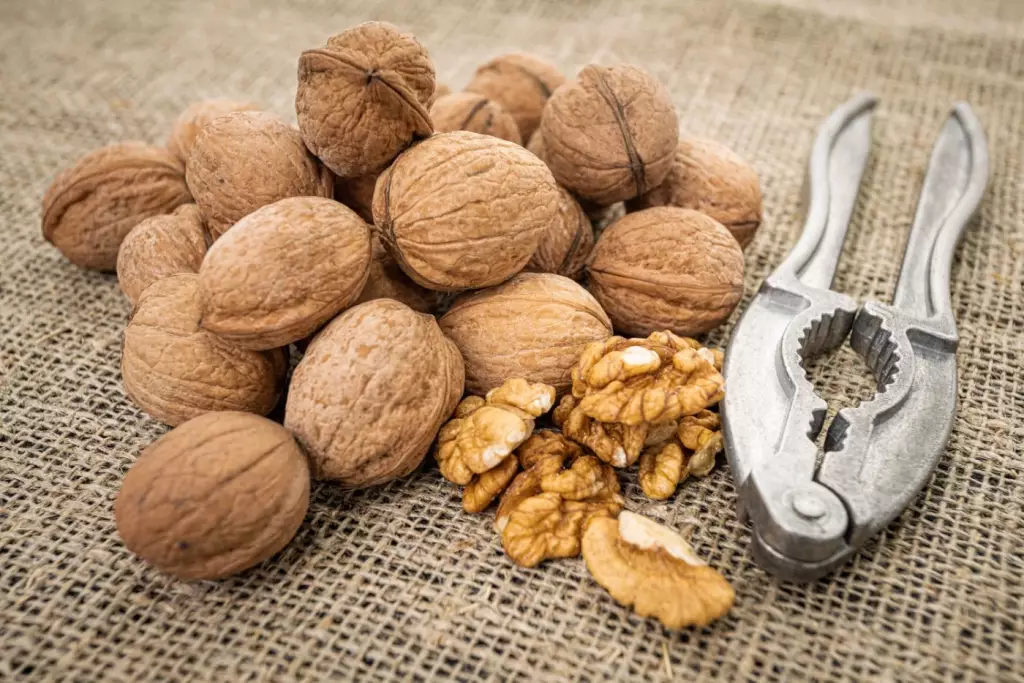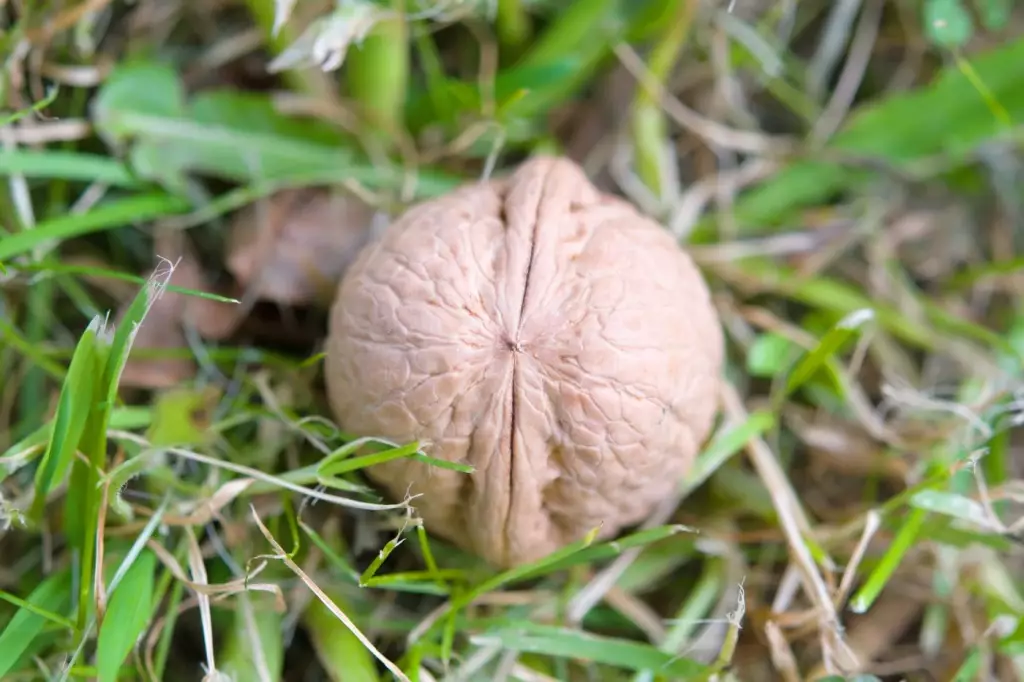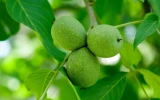How Profitable Is a Walnut Farm in 2023? (Detailed Breakdown)
Walnut farming has grown increasingly popular in recent years, with total worldwide production reaching 4.5 million metric tons in 2019. In the same year, China accounted for 56% of total walnut production, followed by the United States, Iran, and Turkey. By 2023, the average US walnut production estimate is expected to be around 1.45 billion pounds, up by roughly 11% since the 2019–20 marketing year.
Walnut farming can potentially yield profits with a 20% margin. You can wholesale your nuts for $1.59 to $2.86 per pound, sell walnut saplings or seedlings for $5.95 to $49.95 per tree, offer farm-to-table experiences, and conduct workshops.
To increase your revenues, focus on producing high-quality walnuts that can be sold at a premium price. Ensure you plan accordingly, since the early years may yield lower returns because walnut trees take 4–5 years to start bearing nuts, and peak production is usually achieved after 10–12 years.
Understanding the profitability landscape of walnut farming in 2023, as detailed in the breakdown, is essential for setting realistic financial goals and crafting a successful business strategy, as you plan to start your walnut farm from scratch.
Summary
- The profitability of walnut farming depends on various factors such as location, yield, and market conditions.
- Codling moths, walnut husk flies, and spider mites are a few common pests that attack walnuts. Your walnut farm may also suffer from diseases including crown gall, walnut blight, and bacterial canker.
- For optimal growth, walnuts require a specific range of temperatures, with chilling requirements between 0°C and 10°C in the winter and sufficient heat with temperatures below 38°C in the summer.
- To project your walnut farm's revenue in 2023, consider factors like the current market price for walnuts, potential yield increases due to improved farming practices or advancements in technology, and any changes in the demand for walnuts.

On this page:
Cost Breakdown of a Small Walnut Farm
The cost of establishing and maintaining a 5-acre walnut farm will vary depending on several factors, such as location, labor costs, and the type of equipment used. Here's a rough estimate of the costs:
| Costs of a Small Walnut Farm (5 Acres) | Estimated Costs |
|---|---|
| Land (assuming the land is purchased for $10,000 per acre) | $50,000 |
| Machinery and equipment (tractor, harvester, and irrigation system) | $45,000 |
| Tools (shovels, rakes, and pruning shears) | $1,000 |
| Storage facilities (storage building or shed) | $5,000 |
| Fencing (basic wire fence) | $2,000 |
| Walnut tree seedlings or grafted trees | $5,000 |
| Fertilizers (assuming an average of $100 per acre per year) | $500 |
| Labor (assuming a wage rate of $15 per hour and 1,000 hours per year) | $15,000 |
| Maintenance | $5,000 |
| Total cost of establishment and maintenance | $126,500 |
Land and infrastructure for your walnut farm
Acquiring land for your walnut farm is the first major expense you'll encounter. The cost of land varies significantly depending on the region and its suitability for walnut cultivation. Keep in mind that well-drained, fertile soil and a climate with cold winters are ideal for walnut farming. Additionally, you'll need to invest in infrastructure such as storage facilities, fencing, and roads to transport your harvest.
Trees and planting costs of walnut
To establish your walnut farm, you'll need to purchase walnut tree seedlings or grafted trees, which will be your second significant expense. The cost of planting will depend on the number of trees, their spacing, and the chosen planting method.
Walnut farming experts recommend spacing trees about 25–30 feet apart, with around 35–50 trees per acre for optimal growth. Remember that it takes about 4–7 years for a walnut tree to start producing nuts, so plan accordingly.
Irrigation system and fertilization for your farm
A well-established irrigation system is crucial for the healthy growth of your walnut trees. Depending on your location and water availability, this may require digging wells, setting up sprinklers, or using drip irrigation systems to reduce water waste and improve efficiency.
Fertilization is another essential component of walnut farming, as it helps ensure optimal tree growth and nut production. You'll need to apply fertilizers based on soil test results and gather information about the specific nutrient requirements of your walnut trees.
Labor and maintenance on your walnut farm
Lastly, labor costs encompass hiring farmworkers to help plant, maintain, and harvest your walnut farm. Skilled labor is crucial for tasks such as pruning, pest management, and harvesting, as these require specialized knowledge and experience.
Maintenance costs should also be factored in, such as the upkeep of your infrastructure and equipment like tractors, harvesters, and irrigation systems.
Walnut Farm Profitability in 2023

Market trends and demand for walnuts
In recent years, walnut production has been on the rise, with bearing acres in California nearly doubling over the past 20 years. As a walnut farmer, you're probably wondering how this increased production might affect your farm's profitability in 2023. Experts expect that America's walnut production will continue to grow in the foreseeable future, despite challenges in the market and on the input side.
However, with this increase in supply comes an intensifying level of competition in the export market. Countries such as Chile and China have been aggressively vying for market share, which can affect the prices you receive for your walnuts.
Price fluctuations of walnuts
Unfortunately, walnut prices have been under pressure due to the large supply and increased competition. As a walnut grower, you might be facing returns in the range of 40 to 50 cents per pound, which is significantly lower than the cost of production, which can range from $1.20 to $1.50 per pound. This means that, at these prices, many growers could be operating at a loss in 2023.
As of 2021, many walnut growers are facing low returns due to several factors, such as increased production, trade tensions, and changing consumer preferences, according to a report by the University of California. If the returns do not improve, growers may need to consider implementing cost-cutting measures or exploring alternative markets to remain profitable.
It is important to note that these returns are based on current market trends and may change in the future. Walnut growers should regularly monitor market demand and adjust their production and marketing strategies accordingly to remain competitive and profitable.
In addition to market competition, some factors that can contribute to price fluctuations include:
- Weather-related events impacting harvest
- Input cost increases, such as water and fertilizer prices
- Fluctuations in global demand due to economic or geopolitical factors
Revenue and Profit Analysis for Your Walnut Farm

Walnut sales and other income sources
Your walnut farm's primary source of income will be walnut sales. The worldwide production of walnuts was 4.5 million metric tons in 2019, and commercial walnut farming has proven to be a profitable business.
To maximize your revenue, focus on producing high-quality walnuts that can be sold at a premium price. In 2023, the approximate wholesale price range for US walnuts will be between $1.59 and $2.86 per pound.
Besides walnut sales, there are other income sources that can contribute to your farm's profitability. One potential source is selling walnut saplings or seedlings to other farmers and gardeners interested in growing their own walnut trees. According to Willis Orchards, the price of walnut trees can range from $5.95 to $49.95 per tree, depending on the variety and size.
You could also explore options such as agrotourism, conducting workshops, or offering farm-to-table experiences to diversify your income.
Determining profit margins of your walnut farm
You'll need to consider both your income sources and your expenses. This includes costs such as land, labor, equipment, and materials required for walnut production. Also account for potential cost-cutting measures or increased market prices. Balancing these factors will help you achieve the best results and create a profitable agricultural production strategy.
Let's assume you have 50 walnut trees per acre on your 5-acre farm, and each tree produces 80 pounds of walnuts. You will have an estimated walnut revenue of $31,800 and total expenses of $20,500.
To calculate the profit margin, we need to use the following formula:
Profit Margin = (Revenue - Total Expenses) / Revenue x 100%Profit Margin = ($31,800 - $20,500) / $31,800 x 100%
Profit Margin = $17,660 / $31,800 x 100%
Profit Margin = 35.53%Therefore, the profit margin for the walnut farm in this example is 35.53%. This means that for every $1 of revenue generated, the farm earns $0.35 in profit after accounting for all expenses.
It is important to note that this calculation is based on the estimated revenue and expenses provided, and the actual profit margin may vary depending on several factors such as market demand, location, and quality of the product.
Factors Affecting Walnut Farm Profits

Utilize effective cultivation techniques
Site selection and preparation should be carefully considered, as should implementing appropriate irrigation, pruning, and pest management strategies.
-
Site selection: Choose a location with optimal climate conditions and a suitable soil type for walnut growth. This can lead to better production and yield. WikiFarmer suggests that walnuts grow best in temperate climates with deep, well-drained soils.
-
Efficient irrigation: Using techniques such as drip irrigation can help save water and ensure that your trees receive the necessary nutrients for optimal growth.
-
Pruning: Regular pruning can improve tree structure, increase sunlight penetration, and ultimately enhance nut production. A well-maintained orchard will yield better quality and a higher quantity of walnuts.
-
Pest management: Implementing integrated pest management systems can reduce crop damage and keep infestations under control, ultimately protecting your farm's profitability.
Achieve high yield and quality walnuts
Factors such as tree age, growing conditions, and suitable varieties can have a significant impact on both yield and quality.
-
Tree age: Keep in mind that newly planted walnut trees take 4-5 years to start bearing nuts, and peak production is usually achieved after 10–12 years. As the trees mature, they will produce larger harvests. Ensure you plan accordingly since the early years may yield lower returns.
-
Growing conditions: Monitor soil health, nutrient levels, and water availability to maintain favorable growing conditions for your walnut trees. This will result in better quality nuts and a potentially higher yield.
-
Selecting varieties: Choosing varieties with high yield potential and desirable characteristics—such as size, taste, and appearance—can have a positive impact on your farm's profitability. By selecting the right cultivars, you can meet market demands and achieve better prices for your product.
Challenges and Risks in Your Walnut Farm

Pests and diseases that harm your walnut trees
Some common pests that attack walnuts include codling moths, walnut husk flies, and spider mites. Diseases like walnut blight, bacterial canker, and crown gall can also be detrimental to your walnut farm. To tackle these issues, you'll need to implement an integrated pest management plan that involves monitoring, prevention, and timely control measures.
-
Monitoring: Regularly inspect the walnut trees for signs of pests and diseases, such as leaf damage, discoloration, or wilting.
-
Cultural practices: Implement cultural practices such as pruning, fertilizing, and irrigation to promote tree health and vigor. Healthy trees are more resistant to pests and diseases.
-
Biological control: Introduce natural predators or parasites that feed on pests. For example, parasitic wasps can be introduced to control walnut husk fly.
-
Chemical control: Use pesticides only when necessary and in accordance with label instructions. Consider using low-toxicity pesticides or organic options. Rotate pesticides to reduce the risk of resistance.
-
Timing: Apply pesticides at the appropriate time to target pests during their vulnerable life stages. For example, insecticides can be applied during the egg-laying stage of the codling moth.
-
Record keeping: Keep records of pest and disease occurrences, pesticide applications, and other management practices. This information can be used to track trends and adjust the management plan accordingly.
As you assess the profitability of starting a walnut farm in 2023, it's essential to consider the 2023 outlook of walnut prices for logs, trees, and in-shell walnuts, as these factors will significantly impact your farm's revenue and overall financial success.
Weather and climate change can affect your walnut farm
Walnuts require a specific range of temperatures for optimal growth, with chilling requirements between 0°C and 10°C during the winter months and sufficient heat with temperatures below 38°C during the summer. Climate change may bring unpredictable weather patterns, such as droughts, floods, and extreme temperatures, which can negatively impact your walnut trees' health and productivity.
To mitigate these risks, you should consider implementing various adaptive farming practices like efficient irrigation systems, selecting drought-tolerant walnut varieties, or planting cover crops to improve soil health.
-
Efficient irrigation systems: Installing efficient irrigation systems such as drip irrigation or micro-sprinklers can help reduce water usage and improve water distribution. This can help reduce water costs and promote sustainable water management practices.
-
Selecting drought-tolerant walnut varieties: Choosing walnut varieties that are drought-tolerant can help reduce the need for irrigation and promote sustainable practices. Some drought-tolerant walnut varieties include Chandler, Howard, and Tulare.
-
Planting cover crops: Planting cover crops such as clover, vetch, or rye can help improve soil health by adding organic matter, improving soil structure, and reducing erosion. Cover crops can also help suppress weeds and reduce the need for herbicides.
-
Integrated pest management: Implementing integrated pest management practices can help reduce the use of pesticides and promote sustainable pest management practices. This can include monitoring for pests, using natural predators or parasites, and rotating pesticides to reduce the risk of resistance.
-
Soil testing and nutrient management: Regularly testing the soil and implementing nutrient management practices can help ensure that the trees receive the necessary nutrients for optimal growth and yield. This can help reduce costs and promote sustainable practices.



